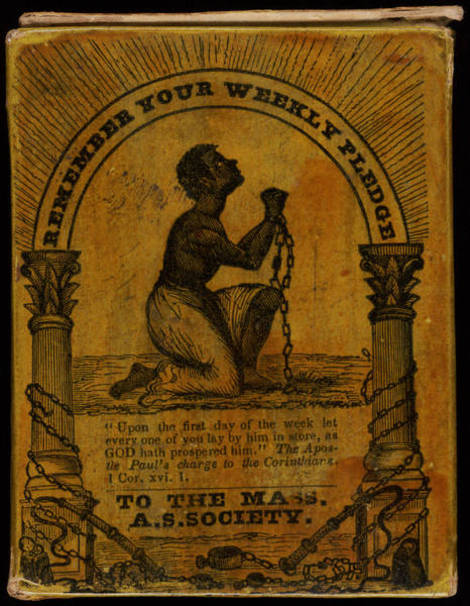АБОЛИЦИОНИ́ЗМ (abolition, от лат. abolitio — уничтожение, отмена), в конце 18 —19 веках движение за отмену работорговли и освобождение рабов в Западной Европе и обеих Америках. До 18 века существование рабства в колониях не вызывало протестов европейцев. Систему рабства, как нарушение естественных прав человека, начали критиковать деятели эпохи Просвещения, квакеры, религиозные группы евангелического толка, осудив ее как нехристианскую.
К концу 18 века антирабовладельческие настроения широко распространились среди просвещенной части европейского общества, но в самих центрах рабовладения — в Вест-Индии, на юге США, в Бразилии — требования освобождения рабов воспринимались негативно. В начале 19 века правительства развитых европейских стран признали необходимость отмены рабства. В 1807 году был запрещен ввоз африканских рабов в США и британские колонии. К 1838 году было запрещено рабовладение в британской части Вест-Индии, а через 10 лет — во французских владениях. Однако рабство сохранялось как социально-экономический институт в 11 южных штатах США
Начало массового политического движения за отмену рабства в США принято относить к 1830-м годам, когда начала издаваться газета «Либерейтор» (Liberator) и основано Американское антирабовладельческое общество (American Anti-Slavery Society). К 1840 году в движении сложилось два течения. Большинство аболиционистов во главе с У. Гаррисоном считало, что с рабством необходимо бороться ненасильственными методами. Меньшинство, возглавляемое бывшим рабом Фридериком Дугласом, выступало за вооруженную борьбу. Джон Браун предпринял неудачную вооруженную попытку освободить рабов (1859). В аболиционистском движении принимали участие многие деятели американской культуры, в том числе писательница Гарриет Бичер-Стоу.
Американских аболиционистов обвиняли в том, что их деятельность ставит под угрозу союз Севера и Юга, противоречит Конституции США, которая оставила решение вопроса о рабовладении на усмотрение отдельных штатов. Избрание президентом Авраама Линкольна, который противился распространению рабовладения на Запад США, стало поворотным пунктом в движении аболиционистов. Убедившись в том, что политика федерального правительства ставит под угрозу привычный образ жизни плантаторов-рабовладельцев, южные штаты вышли из США, что привело к Гражданской войне в США. В 1863 году Линкольн выпустил Прокламацию об освобождении (Emancipation Proclamation), по которому рабы в южных штатах получили свободу. Тринадцатая поправка к Конституции США (1865) запретила рабство по всей стране. К 1888 году рабство было запрещено во всех латиноамериканских странах. В некоторых областях Африки и во многих странах исламского мира рабство продолжало существовать как легальный институт вплоть до 20 века.
The abolitionist movement called for the end of the institution of slavery and had existed in one form or another since colonial times; the early case had been stated most consistently by the Quakers. Most Northern states abolished the institution after the War for Independence, reacting to moral concerns and economic unfeasibility.
The movement gained new momentum in the early 19th century as many critics of slavery hardened their views and rejected their previous advocacy of gradualism and colonization. As the movement grew and became more formally organized, it sparked opposition in both the North and the South; Northern mill owners depended upon slave-produced cotton every bit as much as the Southern plantation owners.
Undeterred, many abolitionists defied the original Fugitive Slave Act of 1793, as well as the later Fugitive Slave Act of 1850, and actively sought to assist runaway slaves in their quest for freedom, most notably through the auspices of the Underground Railroad.
Abolitionist leaders included such figures as William Lloyd Garrison, Frederick Douglass, Harriet Tubman and William Lloyd Still.
On the slavery issue, the abolitionists occupied one extreme on the continuum, the Southern plantation owners the other. Between the extremes were the Free-Soil Party (briefly), the advocates of popular sovereignty, and, after 1854, much of the Republican Party, including Abraham Lincoln.
Abolitionism was a movement in western Europe and the Americas to end the slave trade and set slaves free. The slave system aroused little protest until the 18th century, when rationalist thinkers of the Enlightenment criticized it for violating the rights of man, and Quaker and other evangelical religious groups condemned it as un-Christian. Though anti-slavery sentiments were widespread by the late 18th century, they had little immediate effect on the centers of slavery: the West Indies, South America, and the Southern United States. The Somersett's case in 1772 that emancipated slaves in England, helped launch the movement to abolish slavery. Pennsylvania passed An Act for the Gradual Abolition of Slavery in 1780. Britain banned the importation of African slaves in its colonies in 1807, and the United States followed in 1808. The British West Indies abolished slavery in 1827 and the French colonies abolished it 15 years later.
In Britain, William Wilberforce took on the cause of abolition in 1787 after the formation of the Committee for the Abolition of the Slave Trade, in which he led the parliamentary campaign to abolish the slave trade in the British Empire with the Slave Trade Act 1807. He continued to campaign for the abolition of slavery in the British Empire, which he lived to see in the Slavery Abolition Act 1833.
In eleven States constituting the American South, slavery was a social and powerful economic institution, integral to the agricultural economy. By the 1860 United States Census, the slave population in the United States had grown to four million. [1] . American abolitionism labored under the handicap that it was accused of threatening the harmony of North and South in the Union. The abolitionist movement in the North was led by social reformers such as William Lloyd Garrison, founder of the American Anti-Slavery Society; writers such as John Greenleaf Whittier and Harriet Beecher Stowe; former slaves such as Frederick Douglass; and free blacks such as brothers Charles Henry Langston and John Mercer Langston, who helped found the Ohio Anti-Slavery Society. [2]
The 1860 presidential victory of Abraham Lincoln, who opposed the spread of slavery to the Western United States, marked a turning point in the movement. Convinced that their way of life was threatened, the Southern states seceded from the Union, which led to the American Civil War. In 1863, Lincoln issued the Emancipation Proclamation, which freed slaves held in the Confederate States; the 13th Amendment to the U.S. Constitution (1865) prohibited slavery throughout the country. Slavery was abolished in most of Latin America during the Independence Wars (1810-1822), but slavery remained a practice in the region up to 1888 in Brazil, as well as having long life in the remaining Spanish colonies of Cuba and Puerto Rico. In some parts of Africa and in much of the Islamic world, it persisted as a legal institution well into the 20th century.
Abolitionism was preceded by the New Laws of the Indies in 1542, in which Emperor Charles V declared free all Native American slaves, abolishing slavery of these races, and declaring them citizens of the Empire with full rights. The move was inspired by writings of the Spanish monk Bartolome de las Casas and the School of Salamanca. Spanish settlers replaced the Native American slaves with enslaved laborers brought from Africa, so did not abolish slavery altogether.
Today, child and adult slavery and forced labour are illegal in most countries, as well as being against international law. Because slavery still exists, however, with an estimated 27 million people enslaved worldwide, a new international abolitionist movement has recently emerged.

Collection box for Massachusetts Anti-Slavery Society. Circa 1850.
